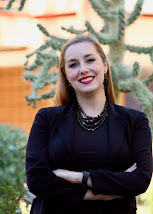Today more than ever we are competing for our students' attention within the world of unfolding events. We are instructing across a variety of platforms both asynchronous fully online, and synchronous, hybrid, virtual face-to-face. It can be difficult to establish our course as paramount in our students minds. However, with a little planning we can help students see the intersection of their studies within the world around them, rather than just in an academic silo disconnected from their daily life.

We’ve all heard students whisper that the first day of school in any course is “syllabus day”, a day in which an instructor reads over their syllabus document and points out any pertinent information and answers students questions about the workload for the term. It’s no secret that some students admit to skipping what they believe will be a “syllabus day”, because after all, they can read the syllabus at home. Although fully online students will not have this synchronous meeting to discuss the syllabus, many of them may begin their course with that exact document digitally on the first day of class. But “syllabus day” has the opportunity to be the day in which we connect the upcoming learning and assessments in our course to the interests and heart of our students… and also point out any major information they should be aware of on the way.
Rather than opening the first day of a course with a list of upcoming deadlines and required readings, what if we could first envelop students in the majesty of our course content? What does that look like?
Derek Bruff talks about opening moments that set the tone for your term in his book “Intentional Tech: Principles to Guide the Use of Educational Technology in College Teaching” (2019). He calls them “Times for Telling.” Bruff explores examples across different fields for capturing student interest. One is the first day of school science experiment that is demonstrated at the front of the room and then broken down into interwoven aspects of science through the content. One is a collection of case studies in which students are called upon to answer increasing complex questions about property law through an interesting story about a rampaging rhinoceros. Another teacher applies current socio-political strata to a classic monopoly game and lets students play to “win”. The goal of all of these activities is to give students a challenging question within a field of study that they can ponder. The question should be difficult but not discouraging, and then we give them the opportunity to interact with these ideas.
In face-to-face classes perhaps we can divide students into break out groups to consider answers and explanations, the same in synchronous virtual meetings and Zoom breakout rooms. But, in fully online courses this may mean you need to lock the rest of your content until students have completed the shiny new overview section of your course. This is possible in learning management systems like Canvas that allow you to apply prerequisites to modules and activities. The overview may be presented via video, text, or lecture and have independent engagement activities. It’s also a good space to consider interactive software like VoiceThread or FlipGrid to get students using their voices to respond.

So. Does this mean every subject needs to intersect with current world events? No, there are other relevant areas of life where course content could apply. The most important part as Michael Theall of Youngstown State University notes in his paper, “Related course material to real-life situations" (2012) for IDEA, is “If prior experience can be connected to new material in a meaningful way, that material can be more clearly understood and more easily learned.” So perhaps pick an area within your course that students may find interesting but have some misconceptions. Theall explains that misconceptions are easier to untangle if we can use relatable situations to organize facts in a logical way. We want to help students adjust their thinking, not reject it outright. If we choose a good example in our field to work from we can “interweave theory, applications, and recognizable tasks” to help students “grasp the importance of the course” and increase motivation (Theall, 2012, p. 2). We will work on addressing that misconception through new information presented throughout the term.
After you’ve captured their interest then you can bring the class back together to discuss the more mechanical basics of a course. I’ve found for both face-to-face and online courses, following the Quality Matters Recommendations for Overview and Introductions is a nice touch and helps avoid confusion.
Consider outlining in brief:
I recommend following the overview of your course with a time for introductions both of the instructor and your students. We will explore creative ideas for doing so in both online and face to face classes in an upcoming blog post.
How do you create excitement about your course on the first day of school? Let us know in the comments.
 Post Author:
Post Author:
We’ve all heard students whisper that the first day of school in any course is “syllabus day”, a day in which an instructor reads over their syllabus document and points out any pertinent information and answers students questions about the workload for the term. It’s no secret that some students admit to skipping what they believe will be a “syllabus day”, because after all, they can read the syllabus at home. Although fully online students will not have this synchronous meeting to discuss the syllabus, many of them may begin their course with that exact document digitally on the first day of class. But “syllabus day” has the opportunity to be the day in which we connect the upcoming learning and assessments in our course to the interests and heart of our students… and also point out any major information they should be aware of on the way.
Rather than opening the first day of a course with a list of upcoming deadlines and required readings, what if we could first envelop students in the majesty of our course content? What does that look like?
Derek Bruff talks about opening moments that set the tone for your term in his book “Intentional Tech: Principles to Guide the Use of Educational Technology in College Teaching” (2019). He calls them “Times for Telling.” Bruff explores examples across different fields for capturing student interest. One is the first day of school science experiment that is demonstrated at the front of the room and then broken down into interwoven aspects of science through the content. One is a collection of case studies in which students are called upon to answer increasing complex questions about property law through an interesting story about a rampaging rhinoceros. Another teacher applies current socio-political strata to a classic monopoly game and lets students play to “win”. The goal of all of these activities is to give students a challenging question within a field of study that they can ponder. The question should be difficult but not discouraging, and then we give them the opportunity to interact with these ideas.
In face-to-face classes perhaps we can divide students into break out groups to consider answers and explanations, the same in synchronous virtual meetings and Zoom breakout rooms. But, in fully online courses this may mean you need to lock the rest of your content until students have completed the shiny new overview section of your course. This is possible in learning management systems like Canvas that allow you to apply prerequisites to modules and activities. The overview may be presented via video, text, or lecture and have independent engagement activities. It’s also a good space to consider interactive software like VoiceThread or FlipGrid to get students using their voices to respond.
So. Does this mean every subject needs to intersect with current world events? No, there are other relevant areas of life where course content could apply. The most important part as Michael Theall of Youngstown State University notes in his paper, “Related course material to real-life situations" (2012) for IDEA, is “If prior experience can be connected to new material in a meaningful way, that material can be more clearly understood and more easily learned.” So perhaps pick an area within your course that students may find interesting but have some misconceptions. Theall explains that misconceptions are easier to untangle if we can use relatable situations to organize facts in a logical way. We want to help students adjust their thinking, not reject it outright. If we choose a good example in our field to work from we can “interweave theory, applications, and recognizable tasks” to help students “grasp the importance of the course” and increase motivation (Theall, 2012, p. 2). We will work on addressing that misconception through new information presented throughout the term.
After you’ve captured their interest then you can bring the class back together to discuss the more mechanical basics of a course. I’ve found for both face-to-face and online courses, following the Quality Matters Recommendations for Overview and Introductions is a nice touch and helps avoid confusion.
Consider outlining in brief:
- The major outcomes and learning objectives for the course.
- The instructional plans for the course: Active learning, lecture, discussion, collaborative group projects, etc.
- What needs to be done FIRST to be successful in class. What happens after they are done with day 1?
- Any technology students should be aware of and where to find it.
- Guidelines for instructor-student communication and peer-to-peer communication: office hours, email etiquette, response times, grammar and vocabulary requirements, and even citations.
I recommend following the overview of your course with a time for introductions both of the instructor and your students. We will explore creative ideas for doing so in both online and face to face classes in an upcoming blog post.
How do you create excitement about your course on the first day of school? Let us know in the comments.
Works Cited
- Bruff, D. (2019). Intentional tech: Principles to guide the use of educational technology in college teaching. West Virginia University Press.
- Theall, M. (2012). Related course material to real-life situations | IDEA. Retrieved June 24, 2020, from https://www.ideaedu.org/idea-notes-on-instruction/related-course-material-to-real-life-situations/
Lenora Ott is an instructional designer in the Center for Evolution and Medicine at Arizona State University. Lenora assists faculty with developing and launching their online courses and provides long term evaluation, redesign, and support for online coursework. Her passion is empowering faculty to create meaningful learning experiences for their students and themselves online. She has worked in higher education for 7 years and has a Master of Science in Global Technology and Development from Arizona State University and a Graduate Certificate in Educational Technology from Northern Arizona University.

Comments
Post a Comment